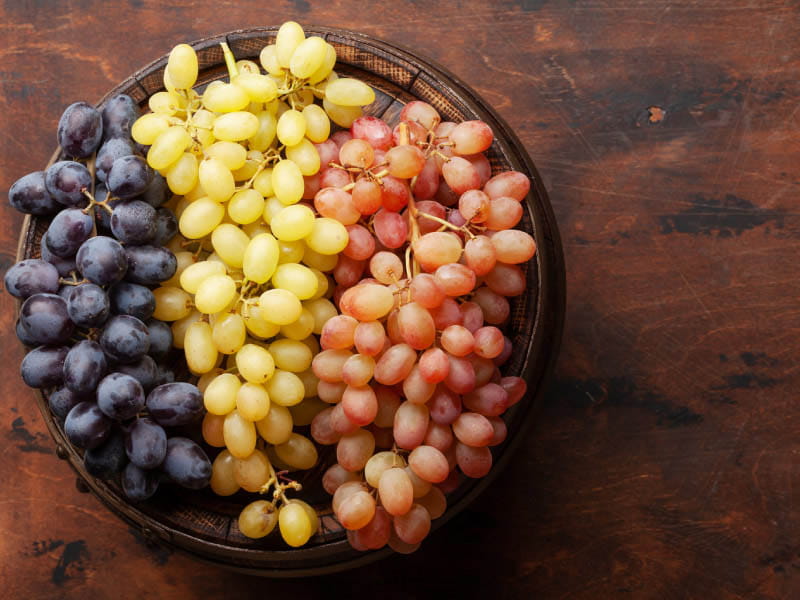Grapes can bring good health in the new year – and some luck, too
By Lucien Chauvin, American Heart Association News

Celebrations to ring in the new year are as varied as they are colorful, quirky and, often, tasty.
A tradition from Latin America has people who hope to travel running around the block with a suitcase, while a Nordic custom involves breaking plates to bring good luck. Some people burn effigies to bid farewell to the past year, while others put coins in their shoes to encourage extra cash to come their way. Many put on underwear of different colors, hoping for health, happiness, prosperity, and even love and passion.
One tradition with origins in Spain, or maybe France, has gained acceptance worldwide: eating 12 grapes at midnight, one for each chime of the clock.
Eating grapes on New Year's Eve is supposed to make wishes come true, but if the goal is for better health, people munching on the small, round fruit on Dec. 31 would be wise to eat them every day.
Grapes – whole, juice, raisins or seeds – are a so-called superfood with properties that contribute to a healthy heart and brain. For instance, clinical research has shown that components found in grapes can help lower cholesterol. Grapes also may be helpful to eyesight and liver function.
The fruit is rich in vitamins A, C, D, E, K, B-1, B-2 and B-6, and several minerals, including copper and manganese. Grapes and raisins provide potassium, which can help keep blood pressure in check. Half a cup of raisins has more potassium than a medium-sized banana. Red and white grapes, and the juice and wine made from them, contain high levels of resveratrol, an antioxidant and anti-inflammatory.
"The scope of the potential health benefits is so broad – cardiovascular, brain, bladder, colon – the list just goes on," said Dr. John Pezzuto, dean of the College of Pharmacy and Health Sciences at Western New England University in Springfield, Massachusetts.
Given all the benefits, it is no wonder that grape consumption is on the rise in the U.S. Per capita consumption was 10.1 pounds in 2022, up from 9.4 pounds in 2021 and 8 pounds 2020, according to the California Table Grape Commission. California produces 99% of the table grapes consumed in the U.S.
Arlen Vanessa Marin, a registered dietitian nutritionist in Miami, said grapes are a good addition to a balanced diet. But what sets them apart from other fruits may be the resveratrol, which some studies suggest can reduce cholesterol and lower blood pressure. "But more science is still needed," she said.
That is where Pezzuto comes in. Much of his research and publishing work has focused on grapes.
Pezzuto's recent work has focused on phytochemicals, compounds produced by plants to help them ward off disease, and the microbiome, the bacteria and fungi found on and inside the human body, and genetic expression. Grapes have more than 1,600 phytochemicals.
In the simplest terms, his work posits that consuming grapes actually changes the microbiome, and the effects are making humans more robust.
"There is a famous saying that you are what you eat. What we have found is that what you eat actually changes you genetically," he said. "I think we are just starting to recognize the power of diet, and, for me, all of this started by looking at grapes."
Grapes are not only good for what's on a person's insides, but they may be good for their outside. A 2022 study led by Pezzuto and published in the journal Antioxidants found that eating grapes can help protect the skin from ultraviolet damage.
Marin does caution that while grapes are great, they are high in sugar: One cup of grapes can have around 15 grams of natural sugar, and raisins are even higher – and this needs to be considered, especially by people with diabetes.
So, consider having a snack alongside a dozen grapes on New Year's Eve.
"With grapes, it is good to pair them with a healthy fat or protein so blood sugar does not spike," she said. "You can pair grapes with almonds or a bit of cheese to control blood sugar spikes."





